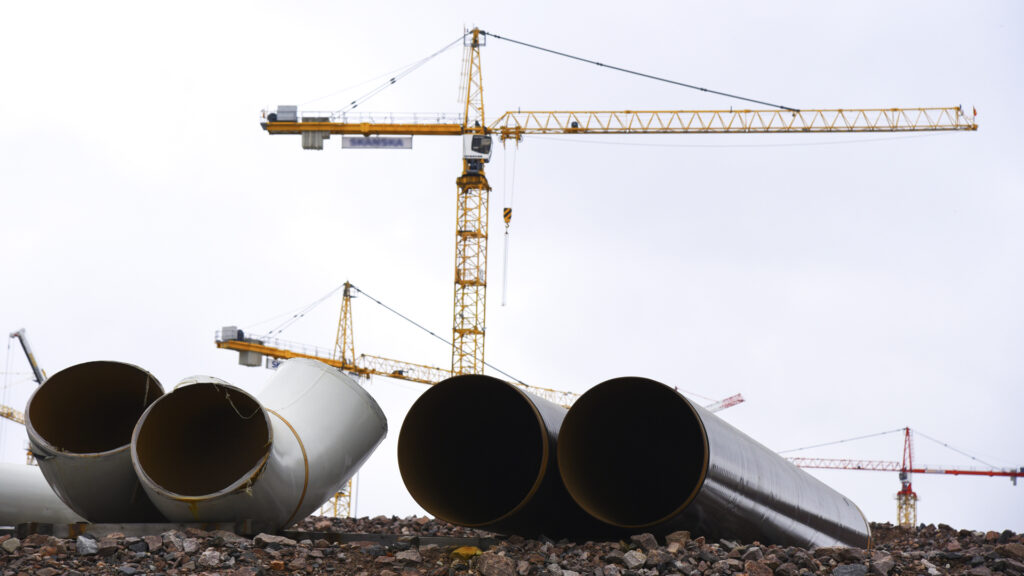The so-called correction series of the Construction Act improves the law's functionality and cuts out bureaucracy. The responsibility of the principal contractor will be cancelled, the carbon footprint assessment will be carried out in connection with the final inspection, the material statement will be replaced by a product list, and the construction permit will receive a processing time guarantee.

Changes to the construction law approved in the last government term are coming in line with the current government program before the law enters into force in 2025. At the beginning of the year, the Ministry of the Environment organized a round of opinions on proposed changes, which collected 280 opinions. In April, the Ministry of the Environment completed the key policy guidelines for changing the law based on the opinion feedback.
The section on the implementation responsibility of the principal responsible implementer is repealed from the law. At the same time, all other mentions of the main responsible implementer will be removed from the law and replaced by the project manager or equivalent. The section on the execution responsibility of the principal implementer enacted by the previous government was changed several times during the years of preparation. The final section was also unclear and open to interpretation. According to the opinion feedback, it would have led to e.g. to schedule delays, increasing legal processes and the blurring of responsibility in contractual relations in the construction industry, and it was therefore decided to remove it.
The climate report, which proves the low-carbon nature of the building, is delivered only once during the project in connection with the final inspection and therefore it is not submitted in connection with the building permit application. This proposal presented by RT in its statement was widely supported, because accurate information about the quantity and quality of materials, for example, is available during the implementation phase. In this case, the uncertainties of the low-carbon assessment related to the construction permit phase can be avoided.
In addition to the carbon footprint, the carbon handprint must be calculated, even though it is an unestablished concept and the presented calculation methods involve many challenges and uncertainties. However, the limit values based on the purpose of use of the building, which will be adjusted later, only apply to the carbon footprint.
The regulation regarding the climate report has not yet been completed. The building mentioned in the law the bill of materials becomes a list of construction products, which will be included in the climate assessment. The product list can be given either as a master drawing level or as an accurate construction product list. A climate report is not required for repair and alteration works or for small houses.
The construction plan of the building permit application must be made in data model format or the information must be provided in another machine-readable format. The minimum requirement for information in a machine-readable format is the RH1 and RH2 forms, other information can be provided as an attachment to the plan as before. If the plans are made in data model format, they must be updated to an implementation model corresponding to the implementation and submitted to the building control by the time of the final inspection. In any case, the updated plans corresponding to the implementation must be submitted to the building control before the final review is submitted.
The 3-month processing time guarantee for construction permits set for building inspections remains in the law, however, in such a way that the processing time guarantee for an exceptionally demanding construction permit and the processing time guarantee for a clean transition placement permit is 6 months. The time starts to count when the building permit application with attachments is comprehensive enough to process the permit application.
The requirements for the building demolition permit are tightened compared to the draft law that was in the opinion round, e.g. by tightening the conditions of the building to be demolished during demolition.
A clean transition investment permit is added to the law, in connection with which the law is specified in relation to permit conditions and appeal rights.
The definitions of housing and accommodation (the airbnb issue) will be added to the Construction Act, when it was previously planned as part of the Residential, Accommodation and Workspace Regulation. A separate opinion round is currently underway on the definition.
The final content of the amended law is being finalized in the ministry. After that, the bill will proceed to EU notification and in autumn 2024 to the parliament for committee hearings.
The Construction Act, with amendments, will enter into force on January 1.1.2025, 1.1.2026, but contains transitional provisions. The entry into force of the three-month processing time guarantee for the building permit, the carbon footprint calculation of the building, and the construction permit in data model format will be moved forward by one year, so that they will be required from January XNUMX, XNUMX.